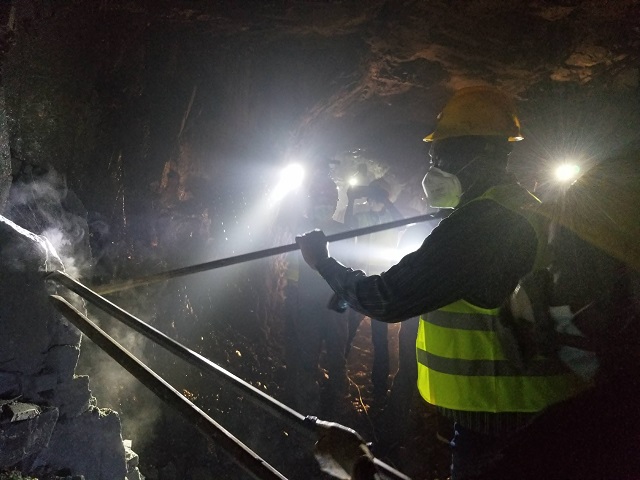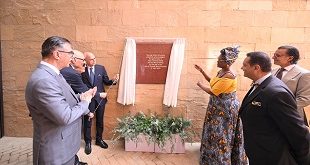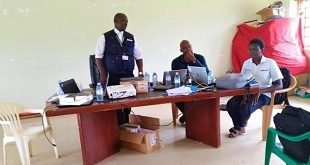
Kampala, Uganda | THE INDEPENDENT | The government is to resume the issuance of new mining licenses as the new mining and Minerals Act takes effect.
The issuance of the licenses by the Directorate of Geological Surveys and Mines had been temporally halted pending the guidelines after the enactment of the Mining and Mineral Act 2022.
The State Minister for Minerals, Peter Lokeris says that with the guidelines in place, the Directorate Of Geological Surveys and Mines which under the law is the regulator of the mineral sector can proceed with the issuance of new licenses across the country.
Lokeris was speaking at the opening of a four-day minerals workshop in Kampala. The workshop is mainly aimed at sensitizing players in the mining sector about the new mining laws and regulations.
According to the minister, the new law has for the first time recognized artisan miners.
The new law established classes of mineral rights which include small-sale and artisanal mining licenses.
Other licenses in the law include large-scale mining licenses; medium-scale mining licenses and small-scale mining licenses.
While the licensing has been on halt, the minister revealed that the country has over time registered an increase in the number of persons or companies awarded different types of mining licenses. “In 2003, there were about 100 mineral licences.
As of 30th June 2023, we have granted 556 (Five hundred fifty-six) licenses, these include 249 (two hundred forty-nine) exploration licenses, 8 (eight) retention licenses, 48 (forty-eight) mining Leases, and 76 (seventy-six) location licenses.
This increase in licenses in the mineral sector is accompanied by a corresponding increase in income and revenue from the sector,” he said.
The licensing of mining will with effect from this year be competitive. The law also provides for mineral processing licenses. It also provides for express penalties.
Earnings from the sector have reportedly been on the increase from about $ 5 million in 2003 to $ 800 million dollars in 2017.
The ministry has been hesitant to release earnings for the period 2017 to date.
Around that time, President Museveni banned the export of unprocessed minerals saying the country would earn more value if minerals were processed. A number of miners have been urging the President to lift the ban.
However, according to the latest finding by the Uganda Extractive Industries Transparency Initiative (UGEITI), Total revenues received from the extractive sector amounted to UGX 241.34 billion in FY 2020-21. Revenues collected by the Uganda Revenue Authority (URA) accounted for 95.72% of the total revenue streams generated by the sector. The mining sector specifically contributed slightly above 61 billion shillings.
Earnings from non-tax revenue (NTR) in license fees, annual mineral rent, and royalties have according to the minister significantly increased from approximately 1.8 billion Uganda Shillings in 2003 to 11.3 billion Uganda Shillings in FY 2022/2023.
According to the Uganda Bureau of Statistics (UBOS) indicates that the mining and quarrying sector accounted for UGX 2.626 trillion in the FY2020-21, which represents 1.8%.
As part of the effort to earn more from the sectors, Lokeris said the ministry expects to begin the implementation of the Mineral Resources Infrastructure Development Project (MRIP) from 2023 to 2028 whose main objective is to establish key infrastructure for monitoring and regulation of exploration and mining activities in the country.
Uganda Vision 2040 envisions a minerals sector that is a major driver of employment creation and GDP growth. The National Development Plan III (NDP III) shows that in 2017/2018, the number of people employed in the mineral sector was 1.6 million. This number is expected to rise to 2.6 million in 2024/2025.
Mercury in gold
The new law is expected to target the elimination of the widespread use of mercury in the mining of gold. Uganda is a signatory to the Minamata Convention on Mercury, a global agreement for reducing mercury pollution. It recognizes the risks of using mercury in artisanal and small-scale gold mining and calls upon nations to reduce, and where feasible eliminate mercury use in this sector. Mercury use remains widespread in artisan mining across the country.
It is mixed with gold-containing materials, forming a mercury-gold amalgam which is then heated, vaporizing the mercury to obtain the gold.
Lokeris warned miners that the use of mercury does not only harm the environment but the health of those who use it.
He said the Government is also collaborating with Partners such as planetGOLD in Uganda whose main objective is to reduce the use of mercury in artisanal and small-scale gold mining and improve the health and lives of local mining communities.
PlanetGold’s gender inclusion officer, Sarah Natumanya revealed that about 73% of gold processing in Uganda involves the use of mercury.
She said they are targeting over 4,500 artisan miners about the mercury-free mining options.
*****
URN
 The Independent Uganda: You get the Truth we Pay the Price
The Independent Uganda: You get the Truth we Pay the Price

